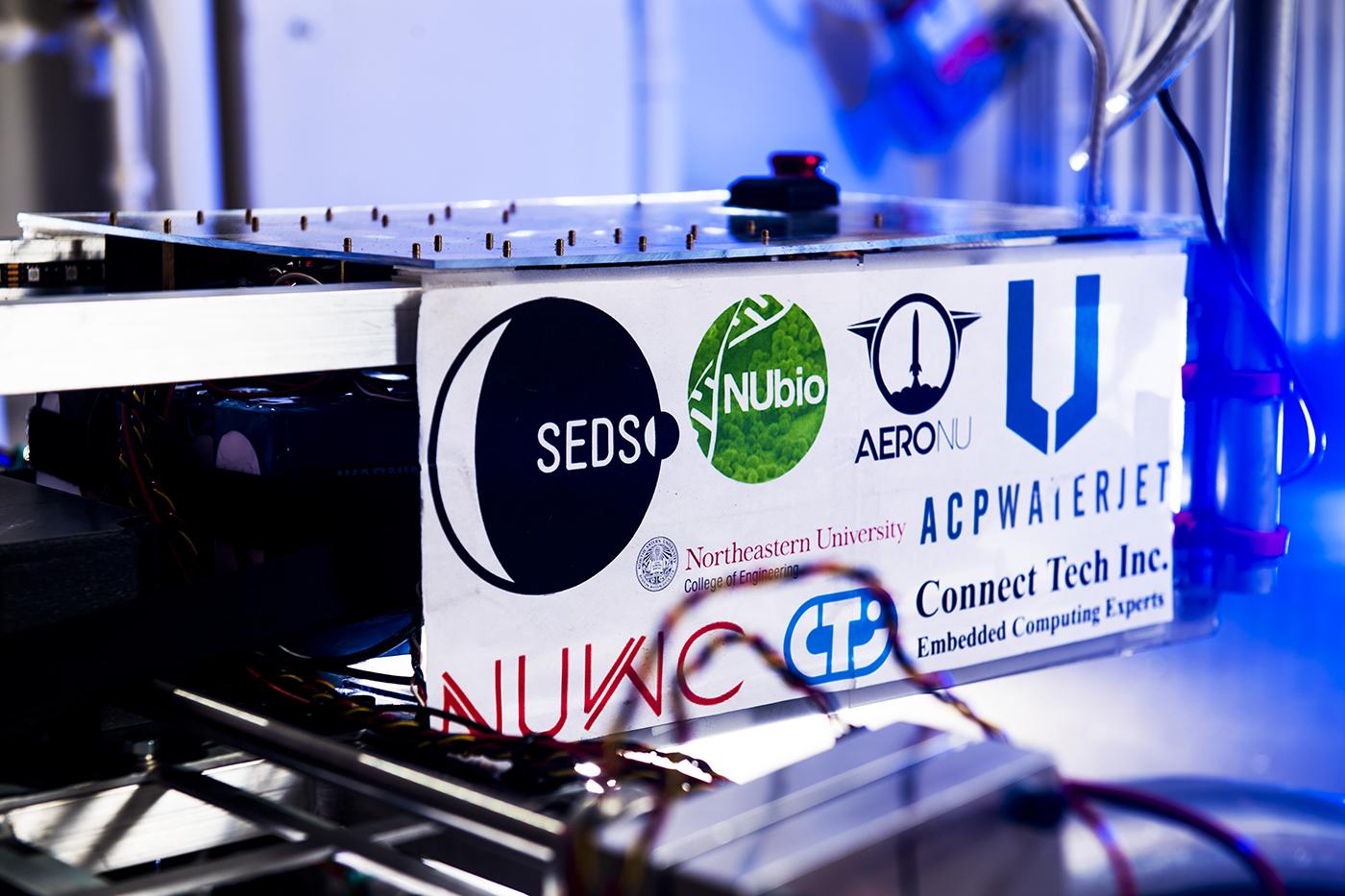Northeastern University team heads to Mars Desert Research Station for University Rover Challenge

Along Utah’s State Route 24, just after mile marker 113, there is a turnoff onto Cow Dung Road. Three miles down that rutted dirt road, there is a fork. The right fork takes you further into the Utah desert. The left fork takes you to Mars.
Or at least as close an approximation of Mars as we can get here on Earth. The area is home to the Mars Desert Research Station, a facility dedicated to investigating the possibilities for human exploration of the Red Planet. And it’s the perfect place for Northeastern students to test their prototype Mars rover.
“The rovers that are on Mars now are very isolated and aren’t working with astronauts,” says Tom Degen, a fourth-year mechanical engineering student who is the team lead on the rover project. “We’re trying to figure out, once we have astronauts there, how rovers can best interact with them.”

A student works with the wiring around the suspension system of the prototype rover. This is Northeastern’s first time entering the University Rover Challenge. Photo by Adam Glanzman/Northeastern University
Since September, Degen and 34 other students of science, engineering, and computer sciences, have been designing and building a rover that could work with astronauts on Mars. At the end of May, their hard work will be put to the test in the Utah desert at the Mars Society’s University Rover Challenge.
The competition, which includes 36 teams from 10 different countries, challenges university students to build rovers capable of picking up and delivering objects to astronauts, servicing equipment, navigating autonomously across rough terrain, and searching for life in samples they collect.
The Northeastern rover, known as the Watney Mark 1 (a nod to Matt Damon’s character in The Martian), can be reconfigured to accomplish each task. One setup has a large robotic arm, capable of picking up a wrench or turning a screwdriver. That arm can be removed and replaced with a life-detection system and a scoop for taking dirt samples. The students can also add a 3D camera to help map the area in front of the rover for the autonomous navigation challenge.
While many of the teams in the University Rover Challenge have returned year after year, this is Northeastern’s first time entering the competition. They may have started from scratch, but their team is up for the challenge.
“We have a couple people who’ve done robotics co-ops in the past, with companies that have worked a lot with robotics arms and military robotics,” Degen says. “They were able to draw a lot from their experiences.”
They’ve also relied on designs and research available from NASA, including mimicking the ‘rocker-bogie’ suspension system used on several of the current Mars rovers. They continued to refine the design as they tested the rover on different obstacles around Northeastern’s Boston campus, driving over curbs and up the Cabot Center steps.
“The hardest part has been integrating all the different aspects,” Degen says. “Especially the electrical and software with the mechanical. Getting all that to work together and function nicely has not been the easiest thing.”
The life-detection team had a particularly tough challenge. In previous years, the rover was required to collect a soil sample to be processed later. The Northeastern team had already begun designing their system when the 2019 rules were released, which said that this year processing needs to happen on board the rover. The life-detection team, led by Rebecca Holleb, a third-year mechanical engineering student, had its hands full making last-minute adjustments.

A detail of the Northeastern team’s rover, which is able to pick up and deliver objects to astronauts, service equipment, navigate autonomously across rough terrain, and search for life in sample it collects. Photo by Adam Glanzman/Northeastern University
“I have a brilliant team of three biochemists, a bioengineer, and a chemist who are doing all of the science,” Holleb says. “We looked for tests that could give us the most scientific knowledge while also being mechanically doable.”
The rover will scoop up dirt samples and scan them with a laser, looking for signs of carbon bonds. Then it will mix the samples with water to run a series of paper tests to check for glucose, proteins, and nitrites, which are typically signs of living organisms. Finally, it will run a sample through a procedure to check for adenosine triphosphate, or ATP, a chemical that provides energy to living cells.
The rover is already on its way to Utah, and the team will be following soon. If they win, they will receive a cash prize, an opportunity to present at the International Mars Society Convention, and a year’s worth of bragging rights. But the students are just as excited about seeing the other rovers as they are about testing their own.
“It’s all these different people at this competition who have been working on the same design challenge as you are,” Holleb says. “Everyone is passionate about what they’re doing and everyone brings different perspectives.”
For media inquiries, please contact media@northeastern.edu.




